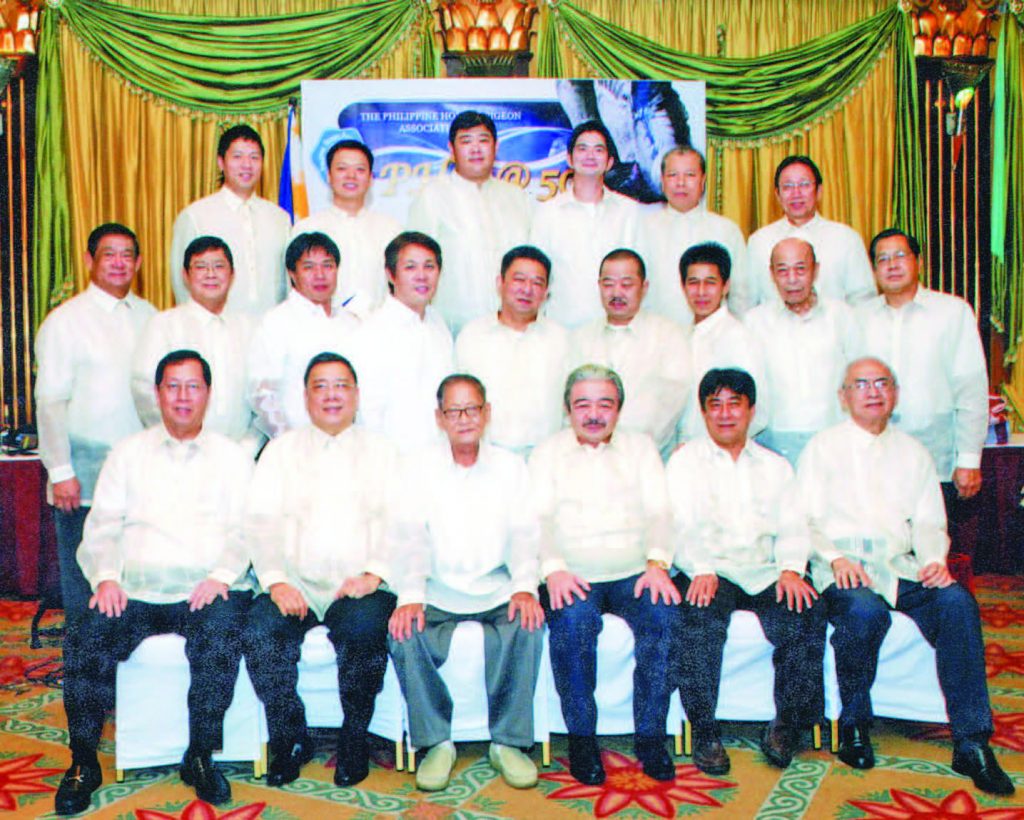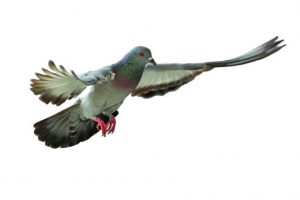In 1931, a homing pigeon flew 7,200 miles from Arras in France to its home loft in Saigon, Vietnam in a span of 24 days. This became the longest recorded flight made by a homing pigeon.
Remarkably, not all birds have the ability to fly back to its home’s location. Only the homing pigeon, a member of the avian family Columbidae has the unique ability to “home” even at distances of more than a thousand miles. This remarkable character of the homing pigeon can be attributed to their ability to read magnetic fields, according to a 1998 article by Michael M. Walker published in the Journal of Theoretical Biology. They may also be able to map their location through sight, as reported by Richard P. Mann and team in a 2014 article published in Biology Letters, or perhaps through infrasound, as postulated by Jonathan Hagstrum in a 2013 article in The Journal of Experimental Biology. Perhaps this may occur through the building of a knowledge base across generations, a trait that only humans and a few other primates share, as written by Takao Sasaki and Dora Bird in the April 2017 edition of Nature Communications.

It is for these reasons that these homing pigeons are used as messengers during the world war, and eventually, kept, trained and developed to be prized sky athletes — racing pigeons competing in international races, the most famous of which is the annual Barcelona International Race participated by many European countries every first week of July. The Barcelona International Race is one of the longest races in pigeon racing world with distances covering up to 900 miles. Just this year, 19,083 competing pigeons were released from Barcelona.
Inception
In the Philippines, the start of Pigeon Racing could be attributed to the club races organized by General Conrad of the US Army Signal Corps through the Homing Pigeon Club around the mid 1930s. They started with the use of stocky and reliable homing pigeons brought by American GIs. One of the avid fanciers to join these races was Jose Montilla.

When the war broke out, races were discontinued and the pigeons were distributed to the members of the club. After the war, Montilla was able to secure pigeons from the US Signal Corps when they left the country in the 1950s. Another remarkable man was Eulogio Chua who imported racing pigeons from the US, Belgium and France during the period of 1945 to 1957, improving the bloodlines of the racing pigeons in the country. In 1958, the Philippine Homing Pigeon, Inc. (PHA) was formed by Jose Montilla, Eulogio Chua, Celso M. Estrella, Salvador Gorostiza, Antonio D. Tengco, Ben Araneta, Peter Yap, Cham Teng Hui, Perfecto Domingo, Nick Bustamante, Tony Dee, and Elias Hechanova. These men pooled their resources and made use of PNR railways to race pigeons in Gumaca, Naga, and Legaspi. In 1960, they took the Northern Route using buses and three years later, tried the Basco, Batanes lap.
Through the efforts of Cham Teng Hui who contacted land surveyors, accurate distances between release points and lofts were measured; eventually, PHA got hold of second-hand clocks from Belgium which the members bought for cheap prices.
The Race Is On
From the 1960s to the present, the pigeon racing as a sport continued its steady development. Aside from the PHA pioneers, many remarkable fanciers rose to gain popularity and respect because of their sportsman attitude and records. Among these remarkable pigeon racing sportsmen are Tommy De Vera, Peter See, Cham Tieng Seng (popularly called Uncle Cha), the late Paul Ung and my uncle Victor Lim.

It was from my uncle that I got my first set of racing pigeons of the Joseph van den Broucke (sometimes spelled as Vandenbroucke) line. Van den Broucke was a Belgian fancier who partnered with pigeon journalist Piet De Weerd, also known as The Flying Dutchman.
Together, they bred and produced some of the best racing pigeon champions in the history of pigeon racing sports. Many European pigeon champions trace their bloodline from the birds of Vandenbroucke.
My uncle is also considered a Pigeon Fancier Legend here in the country. His loft had contained some of the best racing birds of his time and he is very generous in sharing his winningest lines. His Pogi Line, which bears the blood of Vandenbroucke pigeons, was the foundation for the birds he gave me in 1982, one of which performed well in the South Race of 1983. This bird, Crack 52, became one of my foundation birds and up to now, his line even when outcrossed, has performed extremely well in long-distance races.
North to South
The North Derby is flown between the rainy months of October to November, depending on club schedule. It is called North Derby as birds fly the northern route, from the first lap somewhere in Nueva Vizcaya to the last lap that could go as far as Sta. Ana in Cagayan or Batanes. The birds fly through strong rains and wind and have to maneuver along mountainous trails.
The South Derby, like its name, takes the south route, from Quezon to as far as Leyte. Depending on club schedule, the races take place between the months of February to March. The birds have to fly against strong side winds and heat, and sometimes intense rains along their path. The birds also have to fly across the seas, from one island to another.

South Races are considered one of the hardest races in the Philippines because of these challenges faced by the pigeons.
Aside from these two derbies is the Peter Yap Cup, also known as the McArthur National Race, which happens annually around third week of March. Started in 2011, it is organized by the PHA with the goal of having all pigeon clubs, be it small or big, race altogether in one dream race. By far, this race is considered the most prestigious and the hardest of all races because of the participation of the ‘big names’ in the sport and likewise because of the big number of participants. This year alone, for the 2017-2018 race season, 1,396 birds and 667 lofts competed in the prestigious McArthur National Race (NCR Sector) with only eleven pigeons able to clock in on time.
More than Luck
It takes more than luck for a fancier and the bird to win these races. Many a fancier focuses on the loft-management and health of their pigeons, while some would rely on their pigeon’s bloodline.
While all these factors play in creating the ultimate athlete of the sky, it takes still a special balance and combination to make your pigeons outperform other pigeons. These and all, I will try to discuss in the coming issues.
The Secret Behind a Sky Athlete
Developing the homing pigeon into a racing pigeon is not a simple task. There are many factors involved in creating these sky athletes. These include genetics and selective breeding, excellent loft management, proper nutrition and feed mixes, and training.
But of all those mentioned, the most crucial is the fancier himself, because it is the fancier who has the responsibility to make sure that everything—from selective breeding to training—are done in highest standards.
This appeared in Animal Scene magazine’s September 2018 issue.






